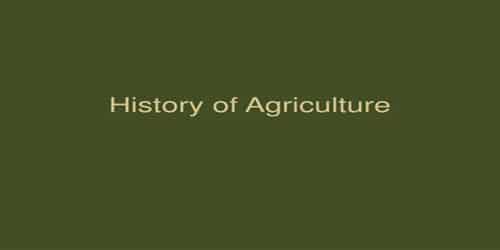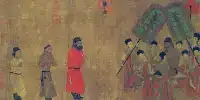The history of agriculture (control of food production and productivity through plant cultivation and livestock) can be organized around different themes (such as time, productivity, environmental impact, and genetic diversity). The most obvious is the sequence of time and events, from collecting wild plants to harvesting crop plants for food to producing hybrid seeds. Agriculture was started independently in different parts of the world and included different types of taxa. At least eleven separate zones of the Old and New Worlds were linked as independent centers of origin.
The history of agriculture began in the Fertile Crescent. Wild crops were harvested and consumed from at least 20,000 BC. By 9500 BC, eight Neolithic founding crops were cultivated in summer, corn wheat, baked barley, peas, lentils, bitter vet, goat peas and fox – leaven. Evidence suggests that irrigation was first introduced in Egypt and Mesopotamia in the sixth millennium B.C. Various people began digging and repairing canal networks, which helped control the flow of the Nile River into Egypt. The floods caused by waterlogging during the Nile River would have catastrophic impacts for ancient farmers, washed dikes and flooded wetlands. Rice pets date from 6200 BC to 5700 BC, followed by mugs, soy and azuki beans. Pigs have reared in Mesopotamia around 11000 BC, and then there are sheep between 11000 BC and 9000 BC. By 7000 BC, sowing and harvesting reached Mesopotamia, and Sumerian intellectualism measured it by controlling it on fine fertile soil just north of the Persian Gulf. Agriculture was involved in the banks of the Nile River in 6000 BC. In Mesoamerica, wild mammals fed up to 4000 BC. Cotton was raised in Peru in 3600 BC. Camels were domesticated in the late 3000 BC. Potatoes, tomatoes, peppers, squash, beans of various varieties, and a few other plants were also invented in the New World, as was the steep mountain peak in most parts of Andean South America. Agriculture also developed independently on the island of New Guinea.
The Bronze Age, since 3300 BC, witnessed the intensity of agricultural fields such as Mesopotamian Sumer, ancient Egypt, the Indus civilization of the Indian subcontinent, ancient China, and ancient Greece. In the era of the Iron Age and Classical Antiquity, the expansion of ancient Rome, the republic, and then both empires throughout the ancient Mediterranean and Western Europe, established above the existing systems of agriculture and established manual systems that became the basis of medieval agriculture. Between the 17th and 19th centuries, Britain experienced a dramatic increase in agricultural productivity known as the British Agricultural Revolution. This “revolution” consisted of various improvements to the agricultural system that occurred more or less simultaneously. Although one might speculate that the remnants of the plant are rarely preserved in the archaeological record, the ancient quarters and the middens are almost always covered by a small amount of wood in the tree. Charing preserves this material, which allows identification by genus and sometimes species, as well as other forms of qualitative and quantitative analysis. In the Middle Ages, both the Islamic world and Europe changed with advanced farming techniques and the spread of crop plants, such as sugar, rice, cotton and fruit trees, such as oranges in Europe. Andalus. In 1492, after Christopher Columbus sailed, the Columbia Exchange brought new world crops such as corn, potatoes, sweet potatoes and nuts to Europe, and old-world crops such as wheat, barley, rice and turnips, and horses, including cattle, cattle, sheep and goats to America.
The history of agriculture has played a huge role in human civilization. Most of the human population once worked in agriculture, and very few people today can survive without it.














